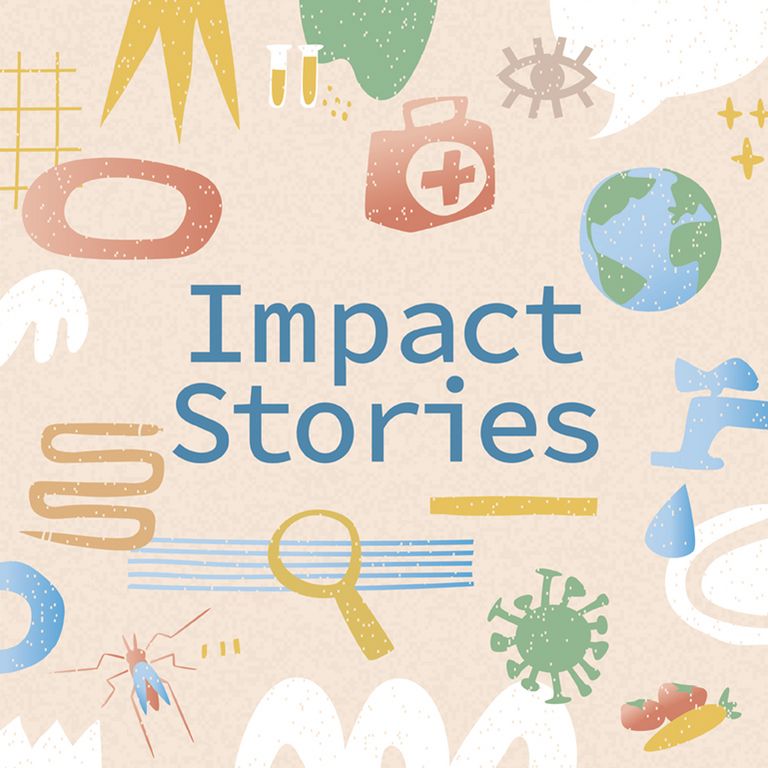


For Antimicrobial Awareness Week, Esther Künzli, Ad Interim Head of the Travel Clinic and Infectious Disease Specialist, joined us to speak about the silent killer that is currently being overshadowed by COVID-19: antimicrobial resistance (AMR). In this interview, we explore topics such as the history of AMR, the impact that is has on individuals and societies, and the need for immediate and coordinated action.
Hi Esther, thanks for joining us! Can you please tell us a bit about yourself?
I am an infectious disease specialist and the ad interim Head of the Travel Clinic at Swiss TPH, where I work with patients who have come back from travels abroad as well as provide pre-travel consultations. Additionally, I have been working on research projects focusing on the impact of travel on the worldwide spread of antibiotic resistant bacteria for almost 10 years.

What is antimicrobial resistance?
Antimicrobial resistance (also known as AMR) describes the phenomenon that viruses, bacteria and parasites are resistant against drugs used to treat diseases that they cause. Most people associate AMR with resistant bacteria – which is also called antibiotic resistance, but viruses and parasites can become resistant as well.
Why do we have AMR in the first place?
The aim of pathogens is to multiply. If we treat them, they try to evade the drugs we use. If they succeed, they can develop resistance to drugs used. If we focus on bacteria or antibiotic resistance, one of the direct causes of the development of resistance is antibiotic use, both, in human medicine and in animal husbandry. Once resistant bacteria have developed, they can spread from person to person, through the environment, through travellers and more. Antibiotic resistance is the epitome of a “One Health” problem.
Is there a long history of AMR or is it a relatively new phenomenon?
The first antibiotics were developed a little less than 100 years ago. Already then, Alexander Fleming, the man who discovered penicillin, cautioned about the potential risk of resistance development in his Nobel Price acceptance speech. And he was right: For every antibiotic that was developed over time, resistance always emerged.

What is the impact of AMR on individuals and societies?
AMR is associated with increased morbidity and mortality and a huge economic burden. In addition to death and disability, prolonged illness results in longer hospital visits, the need for expensive medicines and financial challenges for those affected. It is estimated that until 2050, 10 million people globally will die each year because of AMR if we do not address the problem at hand. Furthermore, it is estimated that until 2050, AMR will cost 100 trillion USD.
Does AMR threaten the success of modern medicine?
Absolutely. AMR not only affects the treatment of infectious diseases, but also puts a lot of other medical procedures at risk. For instance, if antibiotics do not work anymore or work less effectively, therapies associated with a higher risk for infections, such as immunosuppression, become more dangerous. Similarly, complications after surgical procedures might become more common if antibiotics used as preoperative prophylaxis do not work anymore.
AMR is on the rise: should we be worried?
On a global scale, yes, there is need for concern as cases are rapidly increasing. AMR is already considered by some as “the next big pandemic” or “the silent pandemic”, and is on the World Health Organization’s list of top 10 global public health threats facing humanity. We are already seeing cases in which last line antibiotics or a combination of antibiotics have to be used because of resistance development, or even bacteria resistant against all available antibiotics. However, there is a silver lining: more effort is put into the development of new antibiotics, and into reducing the use of antibiotics in animal husbandry and optimizing it within human medicine.
"AMR is considered by some as“the silent pandemic”, and is on the WHO's list of top 10 global public health threats facing humanity."
As borders begin to open up again, what role does travelling play?
People hospitalized abroad have quite a high risk of becoming infected with or at least an asymptomic carrier of antibiotic resistant bacteria. Studies have shown that 60% of people hospitalized on the Indian subcontinent have brought back multidrug resistant bacteria to Europe. We also know that up to 80% of travellers returning from the Indian subcontinent carry resistant bacteria in their gut.
How do we stop the spread of AMR?
Antibiotic use in human medicine and in animal husbandry needs to be reduced or at the bare minimum optimized. Fighting poverty, providing safe drinking water and improved sanitary infrastructure would also have an impact on development and spread of antibiotic resistance. Another important tool are vaccines, either through directly preventing bacterial infections, or preventing viral infections associated with a considerable risk for bacterial superinfections like measles, varicella or also COVID-19.
What work lies ahead?
AMR is a complex problem that requires a multisectoral approach. Greater innovation and investment is required in research, and development of new antimicrobial medicines, vaccines and diagnostic tools. Additionally, by trying to achieve the Sustainable Development Goals, many factors with impact on the development and spread of antimicrobial resistance will also be addressed.